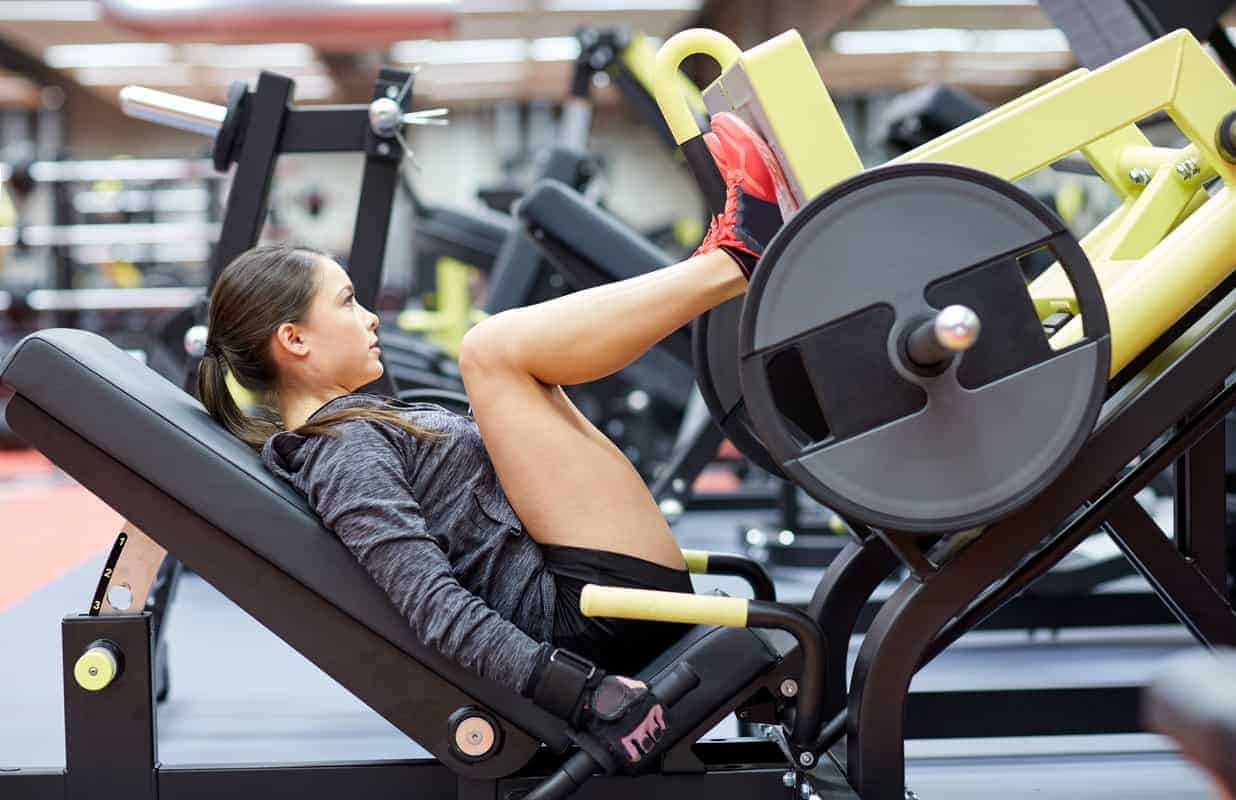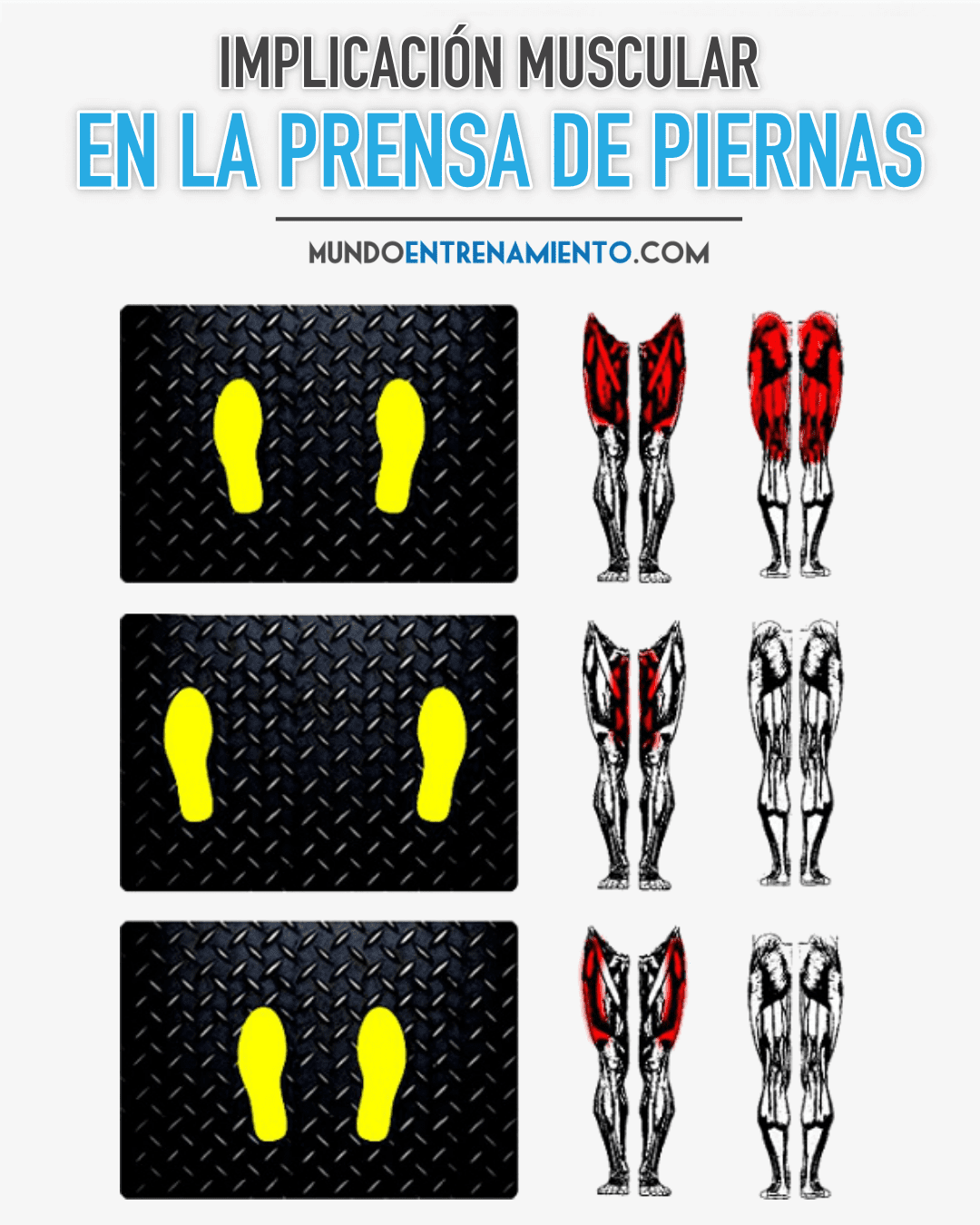The leg press is undoubtedly a great exercise to stimulate the thigh muscles, and in this article, we will discuss its design, how to perform it, and the muscles involved.
What is the leg press?
The leg press is a very popular strength exercise in the field of resistance training and bodybuilding, which primarily focuses on the leg muscles.
This exercise is performed using a special machine called a leg press, which consists of an inclined platform with an adjustable weight support and a seat with a backrest where the user sits.
Leg press in the gym
Within all physical activity and exercise practices, we find exercises focused on strength training, so a wide population sector focuses their training on health, aesthetics, performance, and rehabilitation
[article ids=”52986″] While there are many exercises and ways to select them for leg training, such as variations of squats, leg press, quadriceps extensions, hamstring exercises, and other machines, the benefits of performing this type of training include reducing anxiety and stress, increasing social interaction, promoting self-esteem building, self-confidence, and improving health, along with good physical condition, preventing sarcopenia, controlling diabetes, and improving the vitality of those who practice it (1 and 5).
For this, gym users, prior to performing the leg press, like any other exercise in the training session, should perform a proper warm-up, lasting at least 11 to 15 minutes to prepare the body for training (1).
In this way, this exercise facilitates easy execution as it is guided, and it is also widely transferable, like many other exercises, for tasks such as walking, running, squatting, or jumping (5).
Design of the leg press
It is known that with the advancement of technology and the needs of gyms, the design of the leg press has varied, with this, the manufacturing of them seeks to be made of corrosion-resistant material, to support the weight used with the plates, and for the design to be as good as possible in terms of human physiology.
For this, Vella (2007) mentions that leg press machines appeared around the year 1943, where Clandy Ross and Leo Stern were the creators.
Additionally, these individuals believed that the leg press was biomechanically safer than the vertical leg press machine.
Execution mode of the leg press
As we know, for the correct use of machines in the gym, firstly, it must be observed that it works well, the athlete must receive instruction on how to use it, being careful in the movements performed.
Therefore, the athlete must position themselves on the leg press with their back against the backrest, unlock the safety, and take a breath to start the exercise (4).
Then, the feet should be placed slightly apart, a knee and hip flexion should be performed, and at the end of the movement, a knee extension and an exhalation (9).
For this, Vaz Valle (2020) mentions that to stimulate the quadriceps muscles, the evidence suggests that knee flexion should be as maximum as possible, but on the other hand, other research mentions that the quadriceps are stimulated with flexions ranging from 90º to 100º, and in comparison with Vella (2007), it would seem to make sense, as the leg press knee flexion oscillates around 90º.
On the other hand, the respiratory phase and cardiac work play a fundamental role in the leg press exercise, with which it is observed that when the action starts from flexed knees, a peak pressure is presented, the lowest pressure when the knees are extended, and blood pressure increases successively within each series and repetitions (6).
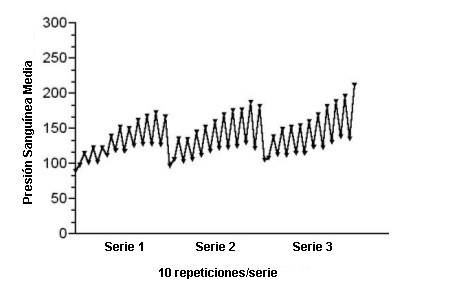
The exercise is performed as follows:
- Sit on the leg press machine, adjust the seat and backrest according to your comfort, and ensure that your back is fully supported against the backrest.
- Place your feet on the platform so that they are shoulder-width apart and parallel to each other. The toes should point forward or slightly outward.
- Hold the safety handles on both sides of the seat.
- Bend your knees to bring the platform towards you. This is the starting point of the exercise.
- Push the platform forward with force, using primarily the leg muscles (quadriceps, glutes, and hamstrings), until the legs are almost fully extended, but without locking the knees.
- Slowly return to the starting position, allowing the platform to come back towards your chest, controlling the movement and maintaining tension in the leg muscles.
- Repeat the exercise according to the desired number of repetitions and sets.
The leg press is an excellent option for developing strength and muscle mass in the legs and can also be used as a complementary exercise in more comprehensive training programs.
7 mistakes to avoid in the leg press
Avoiding common mistakes in the leg press is essential to ensure the effectiveness of the exercise and reduce the risk of injury. Here are five common mistakes you should avoid when performing this exercise:
Incorrect foot position
The position of your feet on the platform should be adequate to ensure proper muscle activation and avoid undue stress on the joints.
Make sure your feet are shoulder-width apart and parallel to each other, with the toes pointing forward or slightly outward.
Locking the knees
Do not lock the knees at the end of the movement when extending the legs. Keep a slight bend in the knees to avoid excessive stress on the joints and maintain tension in the leg muscles.
Lifting the glutes or lower back off the backrest
Keep your back and glutes firmly supported on the backrest throughout the exercise. Lifting them can cause undue stress on the lower back and increase the risk of injury.
Lowering too quickly
Do not lower the platform too quickly or let it come too close to your chest, as this can cause excessive stress on the knees and increase the risk of injury.
Control the movement and lower the platform in a controlled manner until your legs reach an angle of approximately 90 degrees.
Not adjusting the machine correctly
Make sure to adjust the seat and backrest according to your height and comfort before starting the exercise. Incorrect adjustment can affect your posture and movement mechanics, which could result in inadequate performance and a higher risk of injury.
Lifting too heavy
Lift with the weights that allow you to maintain correct technique and good leg flexion. Leave your ego at the gym door and lift a reasonable weight for your lower body.
Helping with the arms
Most people find themselves pushing their legs with their hands. If you go to muscle failure, fine, but for long sets and with a reasonable weight, do not help yourself with your hands and use only your leg muscles.
By avoiding these common mistakes, you can get the most out of the leg press and minimize the risk of injury in your training.
Muscles involved in the leg press
The muscles involved in the leg press are the quadriceps, but we must not forget the synergy performed by the gluteus, in conjunction with the work of the quadriceps.
With this, the quadriceps (composed of its 3 vastus and the rectus femoris) receive greater stimulation on knee extension, for which the rectus femoris works more in hip flexion (5 and 8), and the leg press, compared to the barbell squat, has similar effectiveness but does not compromise the lower back.
For this, Delavier (2001) mentions that depending on the position of the feet, the target muscles will vary:
- Placing the feet lower on the platform will engage the quadriceps.
- Conversely, placing the feet more at the tip, the effort is taken by the glutes and hamstrings.
- On the other hand, if the feet are placed slightly more apart, the adductors will be the main drivers.

On the other hand, Martín Fuentes and collaborators (2021), in their study, attempted to determine if the variation of foot position would modify the stimulation of muscle groups (vastus medialis oblique, vastus lateralis, rectus femoris, gluteus medius) and execution speed, in which the foot position was 100% hip-width, and 0º to 45º in external rotation of the foot and forefoot.
For this, the results showed that there are no significant variations in muscle stimulation with foot variation in the press, but there were some different kinematic parameters regarding the women who performed the exercise.
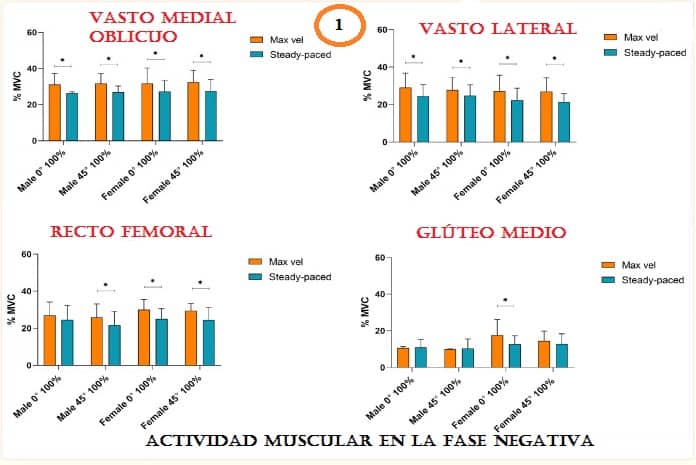
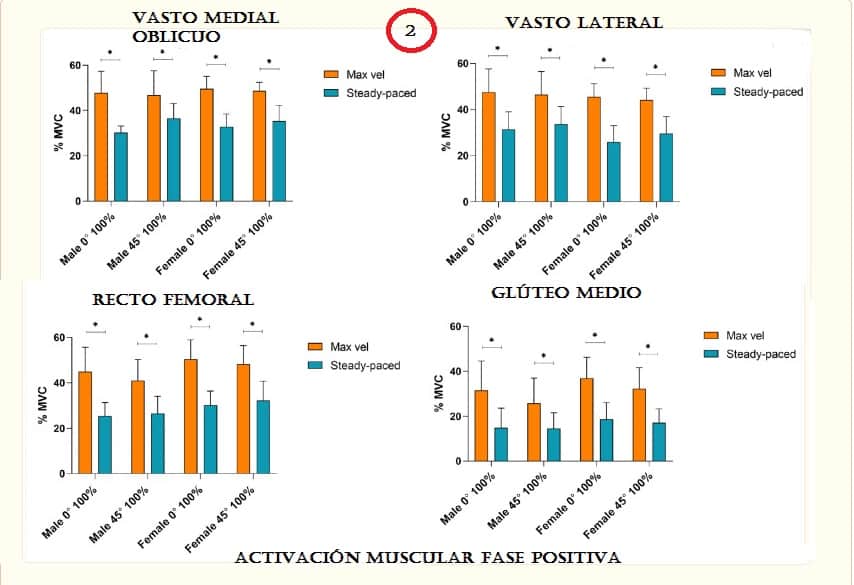
Leg press programming
Much has been seen and researched about the Anaerobic Threshold, with which, in a study conducted by Campos (2021), it is argued that it can be very effective for both strength gains and cardiovascular improvements, both with people with pathologies and advanced in training.
In this way, it proposes three ways to perform a test of this exercise, in non-elite runners:
- 1 RM Test
- Familiarization with the OMNI-RES scale
- Progressive incremental test in leg press
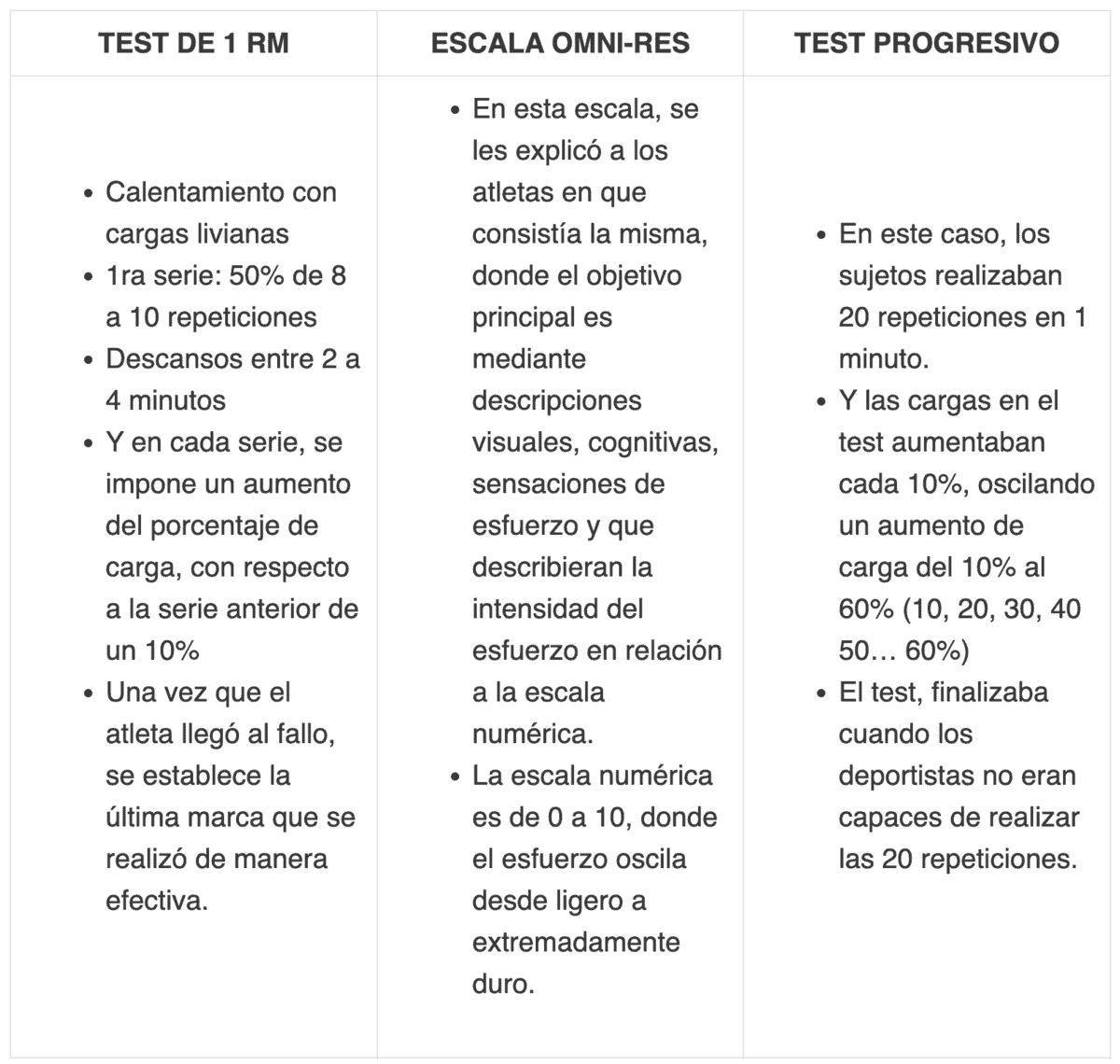
[article ids=”80273″] On the other hand, Fleck. J Steven and collaborators (2006), through the leg press exercise, observed the Blood Pressure response on a work of 3 sets of 10 repetitions, for this, in session 1: they sought familiarization with the exercise, in session 2: they sought the 10 RM load for each participant and recorded it, and from session 3: a load increase was performed in each series with which they asked the participants to perform their 10 maximum repetitions for each series.
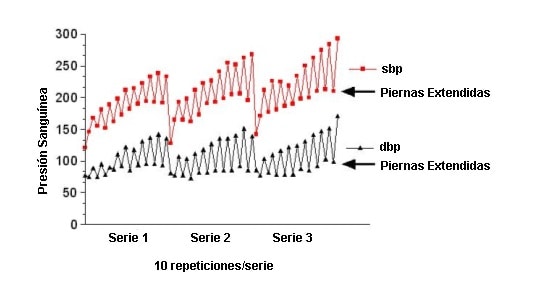
On the other hand, in a study conducted by Coelho de Farias, M and collaborators (2014), they propose concurrent training, in which it would combine resistance, strength, speed, and flexibility exercises for women over 45 years old, involving the leg press exercise at 45º and horizontal, within the work plan.
For this, they propose 12 weeks of training, in which they work at an intensity ranging from 45% to 55%.
In other words, Martín – Fuentes and collaborators (2021), measured the EMG of the lower body muscles, with which trained women and men performed 6 press repetitions with 70% of the 1RM, in which they varied 5 different techniques, and pointed out that they found no significant differences in the variation of foot position both in its width and angle.
In this way, it can be observed that depending always on the context, the ways of planning and dosing the loads will result in varied proposals, as it could be seen in the studies, all are different population groups.
Conclusions
In this way, conducting a critical analysis of the literature, performing this exercise is not very difficult, but it is necessary to have qualified personnel with knowledge to teach it.
For this, taking into account the position of the body and the way to perform it, in the first instance, is important, then with trained people, seeking variations and different ways of programming would be interesting in terms of strength and muscle mass gains (especially in older populations).
Leg press bibliography
- Aguilar Gonzaga, M and collaborators (2022). Methodology of teaching weight training exercises in the gyms of Loja. Sports Science research article. Azogues, Ecuador.
- Campos, Y.A.C.; Vianna, J.M.; Guimarães, M.P.; Souza, H.L.R.; Silva, G.P.; Domínguez, R.; Silva, S.F.; Novaes, J.S. and Reis, V.M. (2021).Prediction of the Anaerobic Threshold in the Leg Press 45° Exercise. International Journal of Medicine and Physical Activity and Sport Sciences vol. 21 (81) pp. 83-97
- Coelho de Farias, M., Borba-Pinheiro, C. J., Oliveira, M. A., & Gomes de Souza Vale, R. (2014). Effects of a concurrent training program on muscle strength, flexibility, and functional autonomy of older women. Journal of Physical Activity Sciences, 15(2), 13-24
- Delavier, F. (2001). Guide to weight training movements 4th edition. Anatomical description. Paidotribo Publishing
- Martín-Fuentes I, Oliva-Lozano JM, Muyor JM. Influence of Feet Position and Execution Velocity on Muscle Activation and Kinematic Parameters During the Inclined Leg Press Exercise. Sports Health. 2022 May-Jun;14(3):317-327. doi: 10.1177/19417381211016357. Epub 2021 Jun 4. PMID: 34085847; PMCID: PMC9112713. (Link)
- Fleck. J Steven and collaborators (2006). Non-invasive characterization of the Blood Pressure Response during the Leg Press Exercise. Colorado State University, Exercise and Sport Science, Fort Collins, CO. University of Colorado, Kinesiology, Boulder CO. Colorado College, Sport Science, Colorado Springs, CO
- Torres-Ronda, Lorena & Fortó, Joan & Cuéllar, Lisímaco & Matas, Xavier. (2010). Relationship between lower limb and trunk muscle power with ball exit speed in the golf drive swing. Apunts: Physical Education and Sports. 3.
- Vaz Valle, E. and Zabaleta, A. (2020). Exercise selection manual for Hypertrophy. University of the Basque Country UPV/EHU.
- Vella, M. (2007). Anatomy and weight training for strength and fitness training. Paidotribo Publishing
